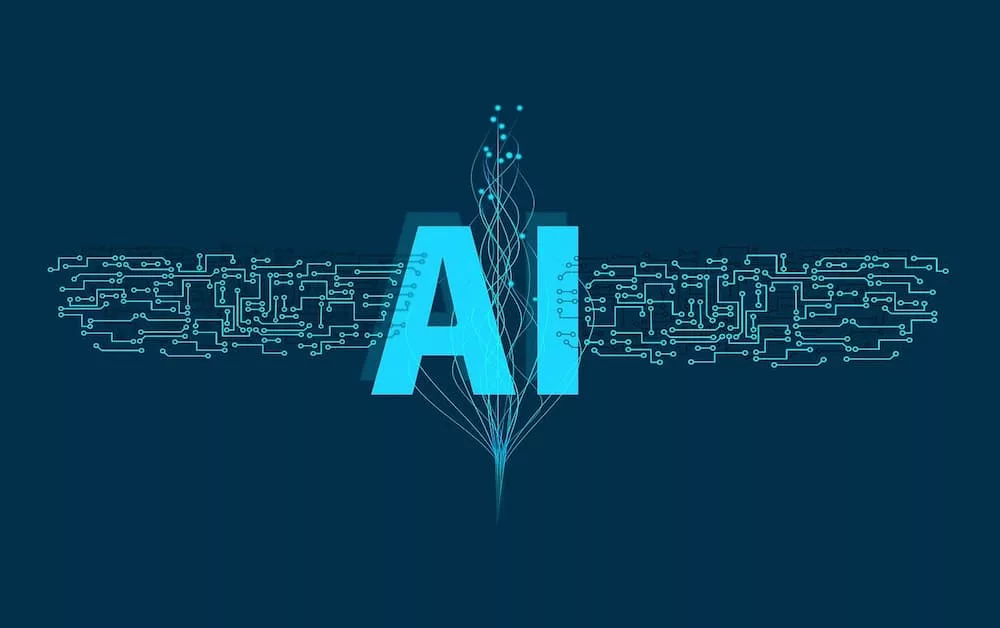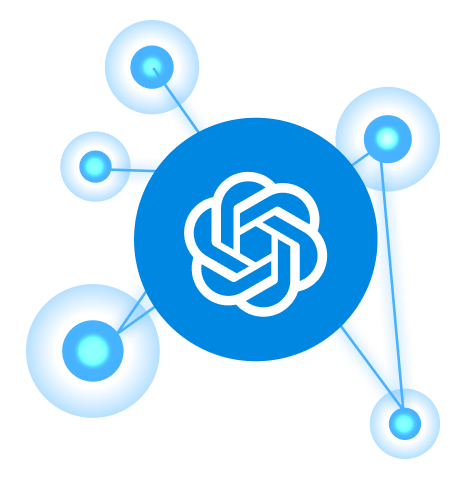Introduction
Generative AI is a rapidly advancing technology within the field of artificial intelligence that can produce a wide range of content, such as text, images, audio, and even synthetic data. This article delves deeper into the fundamental concepts of generative AI and its various applications, highlighting its significance in the realm of AI technologies. Generative AI systems are designed to mimic the cognitive processes of humans by using machine learning algorithms to learn from vast amounts of data, allowing them to generate new and diverse content. These systems have applications in various domains, including natural language processing, computer vision, and data analysis. Overall, the development and advancement of generative AI can revolutionize how we create and interact with digital content in the future.
How generative AI models work
Generative AI models are powered by neural networks designed to recognize patterns and structures in pre-existing data. These models can generate fresh and unique content by leveraging these patterns and structures. This complex process involves analyzing vast amounts of data to extract insights and create something new. As a result, generative artificial intelligence, or GenAI models, have become a valuable tool across a wide range of industries. These models can potentially revolutionize creative work, as they can generate music, art, and even writing that is indistinguishable from that produced by a human.
Generative algorithms for holistic process modeling
Regarding generative algorithms, their main goal is to create a holistic process that considers all the available information without discarding any details. This allows them to generate content in an accurate and contextually relevant way. To implement generative AI effectively, it’s important to understand this holistic approach and how it works. This means paying close attention to the details and ensuring all relevant information is considered during the generative process. By doing so, we can create informative and engaging content without losing any important context along the way.
Analyzing patterns with generative AI models
Generative AI models are designed to learn from large datasets by analyzing patterns and data within them. By doing so, these models can generate new content that is diverse and meaningful. This iterative process of analyzing and generating output helps the model to refine its learning and produce more accurate and relevant results. The generated content can take various forms, such as images, text, audio, and video, and can be used in various applications, including entertainment, marketing, and education. Overall, the ability of generative AI models to learn and create new content can potentially revolutionize many industries and fields.
Generative Adversarial Networks (GANs)
Generative Adversarial Networks (GANs) are generative artificial intelligence (AI) models operating on a distinctive principle of two neural networks. These two networks are the generator and the discriminator, competing against each other to improve the quality of the generated content. The generator network generates data samples, such as images or music, while the discriminator network evaluates the generated samples and determines whether they are realistic. This competitive dynamic within the GAN model enhances the quality of the generated content and makes it more realistic. GANs have become increasingly popular in recent years due to their effectiveness in generating high-quality, realistic data and their potential applications in various fields such as art, fashion, and medicine.

Sequential data and natural language processing tasks
One of the most impressive capabilities of generative AI is its ability to handle sequential data, making it an ideal tool for natural language processing tasks. This particular feature allows the model to not only understand text but also take input data and generate it with high accuracy. This makes it an invaluable tool for conversational AI and virtual assistant applications, where understanding and responding to natural language is crucial for delivering a seamless user experience. In short, generative AI is revolutionizing the world of natural language processing, enabling machines to communicate with humans more intuitively and human-likely.
Synthetic data generation with generative AI
Generative AI has proven to be a valuable tool in the field of synthetic data generation. This process involves using advanced generative models capable of creating realistic data that can be used in various scenarios where high-quality data is either scarce or difficult to obtain. Synthetic data generation involves training a generative model on a particular dataset to learn the underlying patterns and relationships. Once trained, the model can generate new data points similar to the original dataset but with some variation. This variation allows the creation of a diverse dataset that can be used to train machine learning models, test algorithms, and improve data-driven decision-making. Overall, synthetic data generation holds tremendous potential in fields such as healthcare, finance, and autonomous driving, where collecting quality data can be challenging due to privacy concerns, safety risks, or prohibitive costs.
Traditional AI algorithms vs. generative AI
There is a significant difference between traditional AI algorithms and generative AI. While traditional algorithms rely on pre-existing data to make predictions or classifications, generative AI goes beyond that by creating entirely new content. This innovative approach to AI opens up new opportunities for industries that require creative solutions, such as art, music, and literature. Moreover, generative AI can help businesses generate new product ideas, enhance marketing strategies, and streamline manufacturing processes. Its ability to generate content from scratch makes it a powerful tool that can revolutionize how we work and live.
Generative Pre-trained Transformers (GPT)
Generative pre-trained transformers, also known as GPT models, have been recognized as a significant breakthrough in the field of generative AI. These models are designed to learn from vast amounts of data and generate high-quality text almost indistinguishable from human-written content. GPT models have proven particularly effective in natural language understanding and content creation tasks such as language translation, text summarization, and question answering. With the ability to generate coherent and contextually relevant text, GPT models have shown great potential in various fields and applications, including chatbots, content creation, and virtual assistants.
Writing code with generative AI tools
As technology advances, generative AI tools have become increasingly common in software development. These tools have revolutionized the coding process by enabling developers to generate code automatically. With the help of generative AI tools, developers can simplify complex coding tasks and accelerate the software development process. These tools can learn from the existing codebase and generate code that is efficient, reliable, and tailored to the project’s specific needs. The impact of generative AI tools on software development is immense and has the potential to significantly reduce the time and effort required to develop high-quality software products.

Generative AI for high-quality data generation
Generative AI has become a crucial tool in the field of machine learning, primarily for generating high-quality data that ensures the development of accurate models. Its significance lies in its ability to create diverse and representative datasets, which are essential in improving the quality of training data. Generative AI has been instrumental in creating realistic synthetic data for large language models, particularly when collecting large amounts of real-world data is not feasible or ethical. It contributes to the development of reliable algorithms by providing a wide range of data samples and variations, which helps improve the robustness of machine-learning models. Furthermore, generative AI is critical in reducing human bias, a prevalent issue in training datasets, by generating data free from human error or prejudice.
Benefits of generative AI in AI technologies
One of the most significant advancements in the field of artificial intelligence is the integration of generative AI, which has brought numerous benefits to the broader landscape of AI technologies. Firstly, generative AI has enhanced creativity by allowing machines to create new and unique content previously impossible to generate. This has opened up new possibilities for advertising, music, and art industries. Secondly, generative AI has improved data diversity by generating a larger and more varied dataset that can be used to train AI models. This is particularly useful in scenarios where the available data is limited. Lastly, generative AI has the ability to create new data for training models, which can help improve the accuracy and efficiency of machine learning algorithms. Overall, the integration of generative AI has opened up new avenues for innovation and has the potential to revolutionize the way we use and develop AI technologies.
Generative AI results and applications
Generative AI is a rapidly advancing technology that has found applications in a wide range of industries. It has demonstrated its potential in various domains, including text creation, image generation, etc. The technology has become increasingly popular as it offers new opportunities for businesses and individuals to create content with minimal human intervention.
GenAI has become an essential tool for businesses in various industries, from healthcare to finance. It has proved its worth in creating realistic images, designing complex models, and even generating music. With the help of generative AI, businesses can automate their content creation processes, reduce costs, and enhance their efficiency.
Moreover, generative AI has found use cases in the entertainment industry, where it is used to create realistic special effects and animations. It has also found applications in the fashion industry, where it is used to create unique designs and patterns. With its ability to generate creative and innovative content, generative AI has become a game-changer for multiple industries.
Generative AI is a versatile technology that has revolutionized how content is created. Its applications are diverse and expanding, becoming integral to many industries. As technology evolves, we expect to see more exciting applications of generative AI in various domains.
Challenges in implementing generative AI
The field of generative AI is rapidly advancing and has the potential to revolutionize multiple industries. However, with this progress comes various challenges that cannot be ignored. One of the biggest challenges is ensuring these technologies are implemented responsibly and ethically. This involves addressing potential data privacy, bias, and transparency issues. There is a need to ensure that the generated content is not offensive or discriminatory in any way. Additionally, there is a need to ensure that the generated content does not infringe on intellectual property rights. It is critical that organizations utilizing generative AI technologies adhere to strict ethical guidelines and ensure that they are responsibly using these technologies. Ultimately, the success of generative AI will depend on how well these challenges are addressed.

Generative AI and data protection laws
Privacy considerations for generative AI and GDPR: Generative AI systems, which process vast amounts of data, raise significant privacy concerns in the context of data protection laws like the General Data Protection Regulation (GDPR). As these AI systems process data, compliance with regulations becomes crucial. The GDPR, for instance, emphasizes the importance of avoiding decisions based solely on the automated processing of personal data and ensuring data subjects are not adversely affected.
Regulatory scrutiny and de facto regulation: Data protection authorities worldwide scrutinize how generative AI service providers comply with data protection laws. Recent investigations indicate a de facto regulation of generative AI services to ensure adherence to privacy laws. Companies investing in generative AI technology face formidable challenges in navigating privacy laws and protecting user data.
Challenges in AI data privacy: Privacy in the age of generative AI poses a formidable challenge, necessitating companies to address issues related to AI data privacy. The evolving nature of AI technologies requires a nuanced understanding of privacy laws to ensure compliance and safeguard user information.
Risks and protection in generative AI privacy: Generative AI poses risks by potentially exposing an individual’s identity through produced data. Complying with laws governing AI usage becomes difficult. Organizations must navigate these challenges to protect user privacy while harnessing the benefits of generative AI.
Employer considerations and data protection: Employers utilizing generative AI must consider data protection issues. Most data protection laws restrict the transfer of personal data to other countries, emphasizing the importance of responsible data handling when using generative AI in employment contexts.
Conclusion
The exploration of generative AI unveils a landscape teeming with innovation and transformative potential. This revolutionary branch of artificial intelligence, marked by its ability to generate diverse content types such as text, images, audio, and synthetic data, has become a cornerstone of technological advancement. GenAI models analyze patterns within vast datasets, using neural networks and advanced algorithms to predict and create new content. The versatility of generative AI is exemplified by its applications in natural language processing tasks, image creation, and even code generation.
As we delve deeper into the intricate workings of generative AI models, it becomes evident that these technologies are not without challenges. Ethical considerations, responsible use, and adherence to data protection laws are paramount as generative AI becomes integral to various industries. The collaborative synergy between human intelligence and generative AI technologies emphasizes the importance of leveraging these tools to augment human capabilities rather than replace them. As we stand on the precipice of a future shaped by generative AI, understanding its nuances equips us to harness its power responsibly, fostering a landscape where creativity and innovation converge for the betterment of society.
- AI, GenAI, generative AI, GPT




